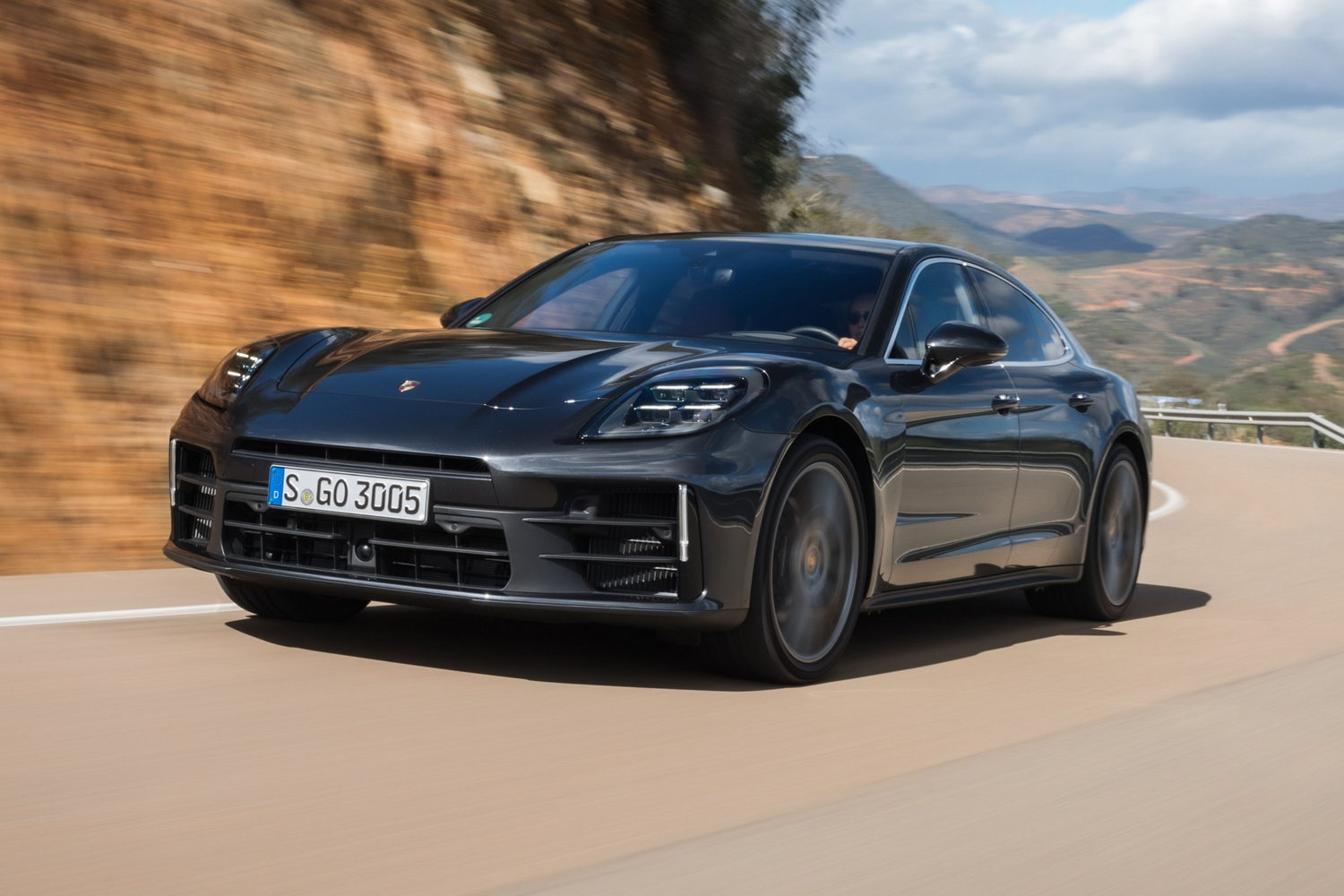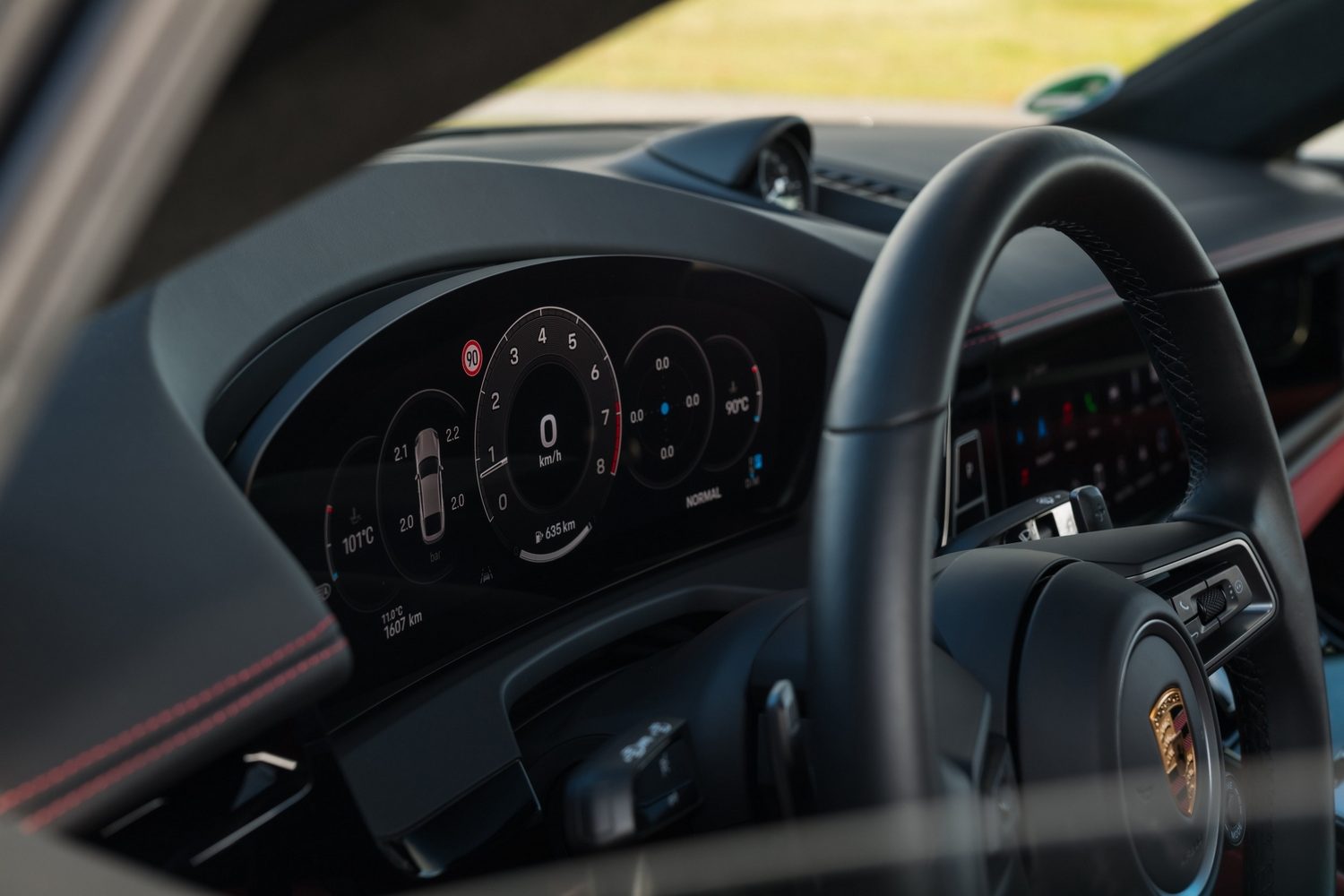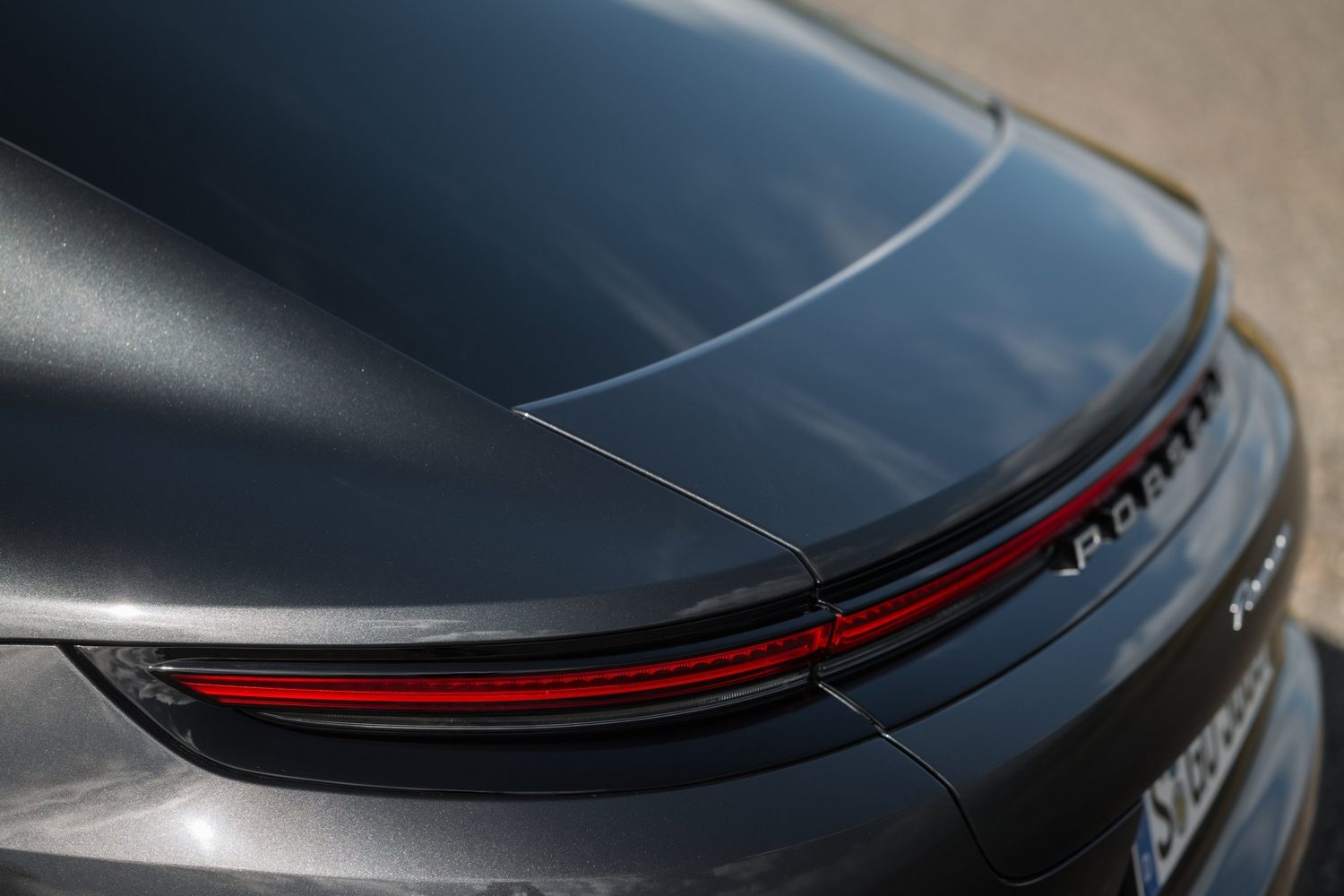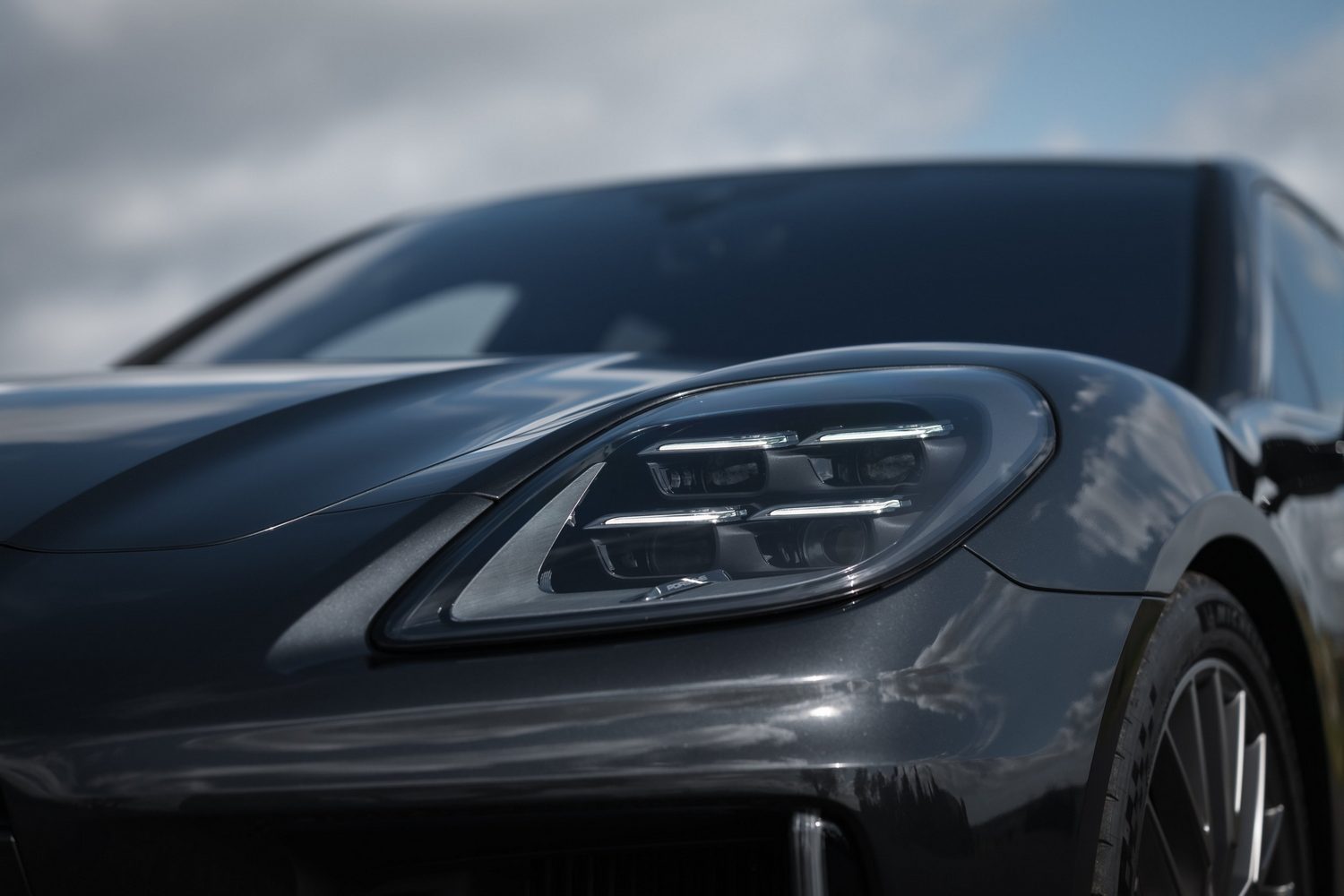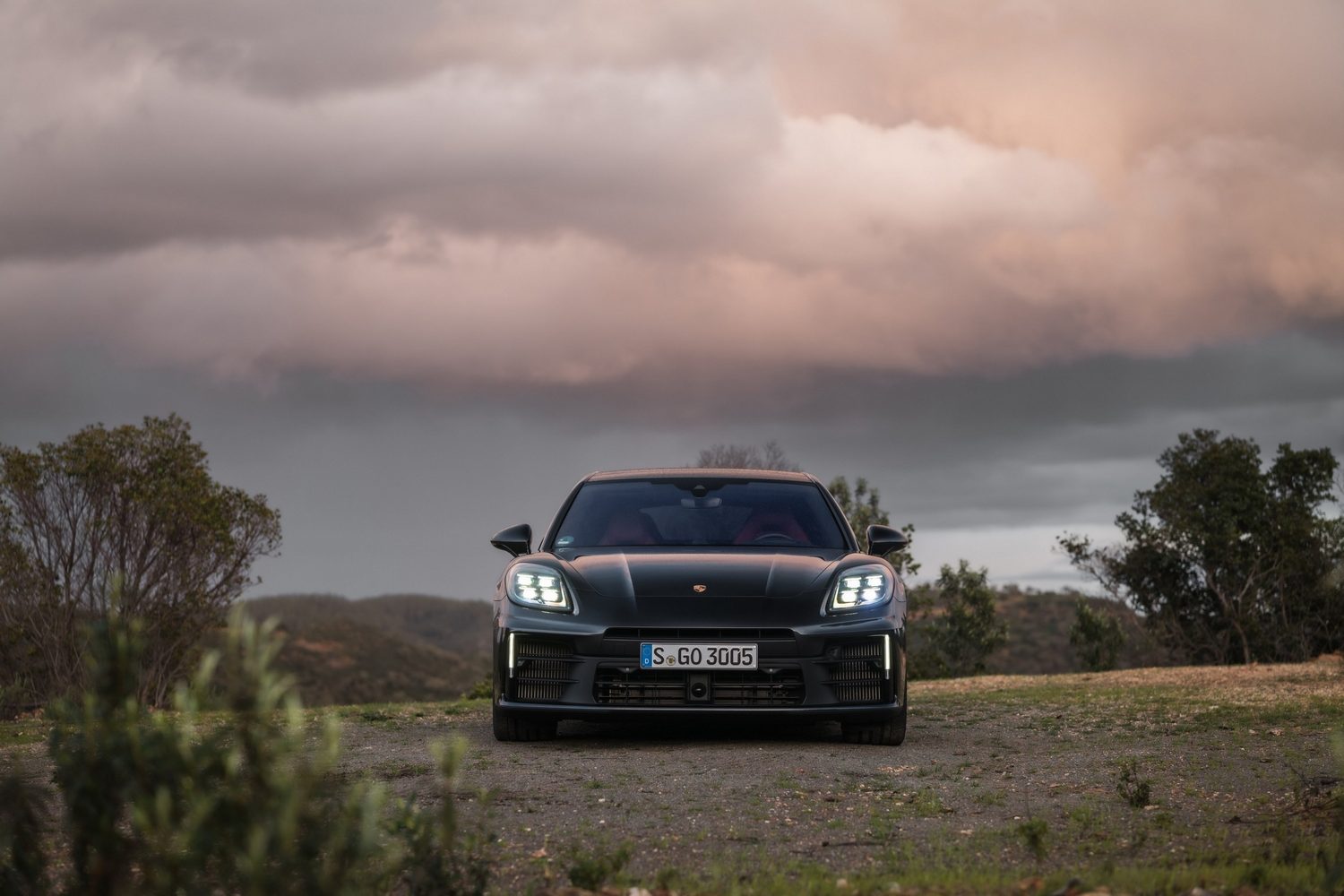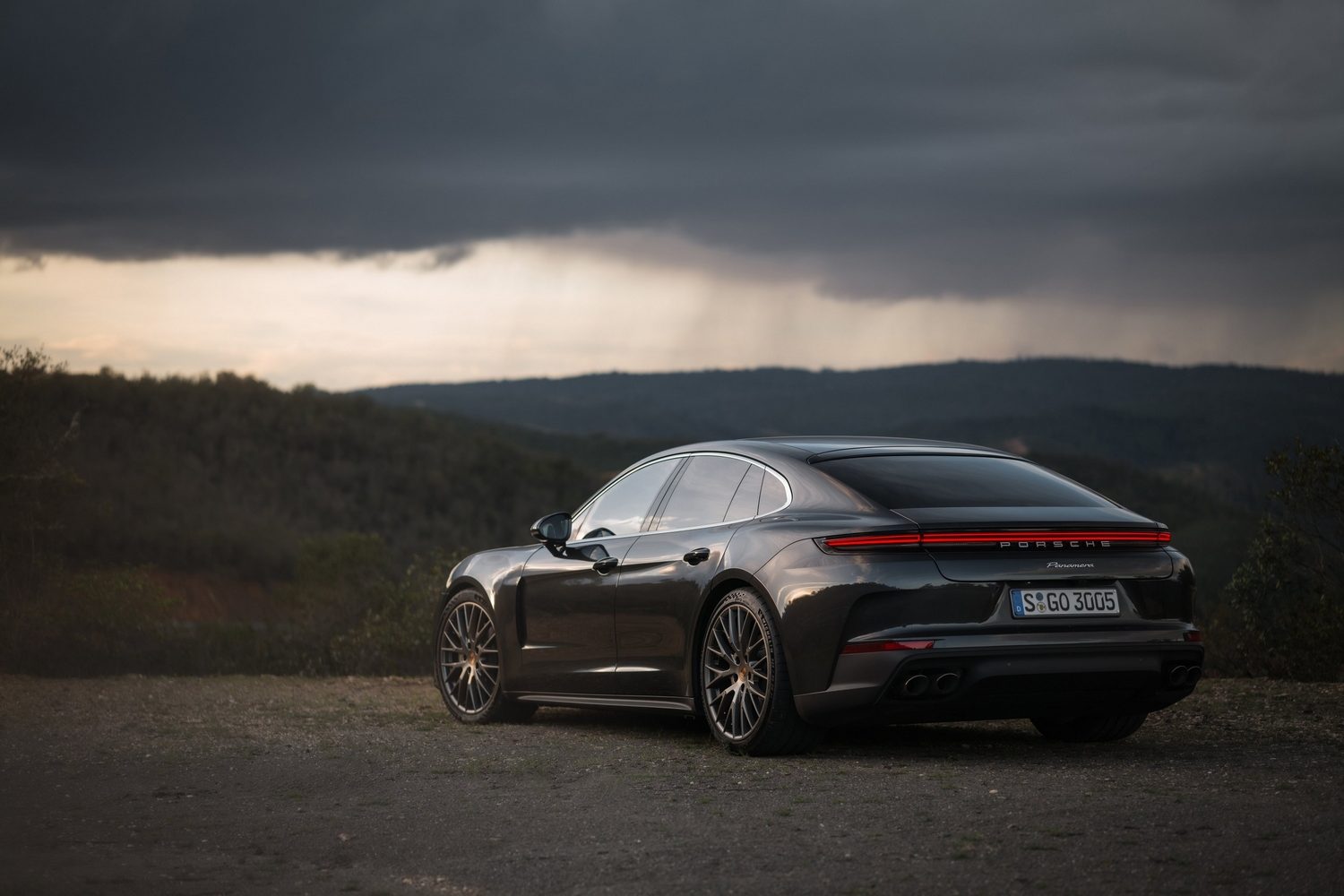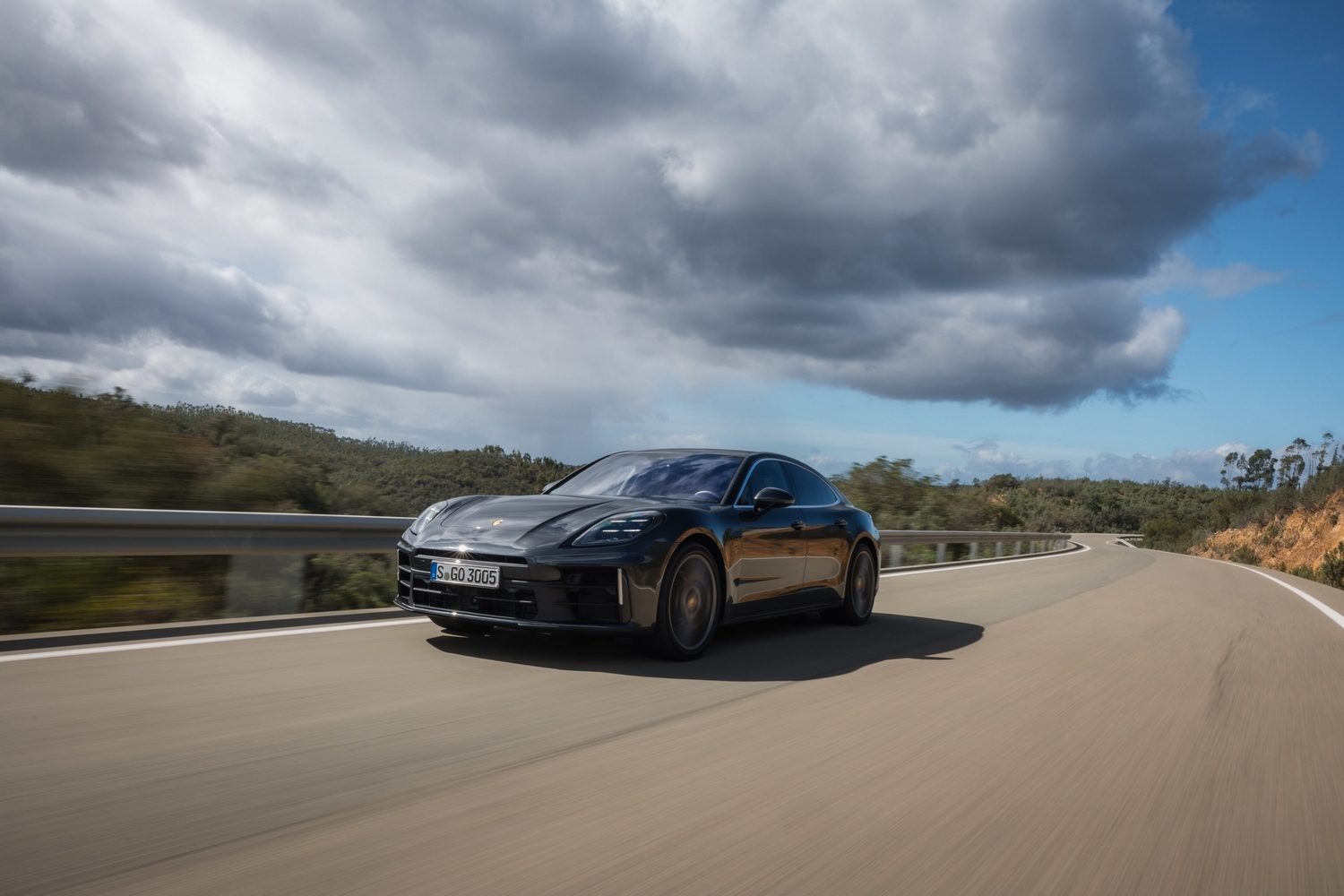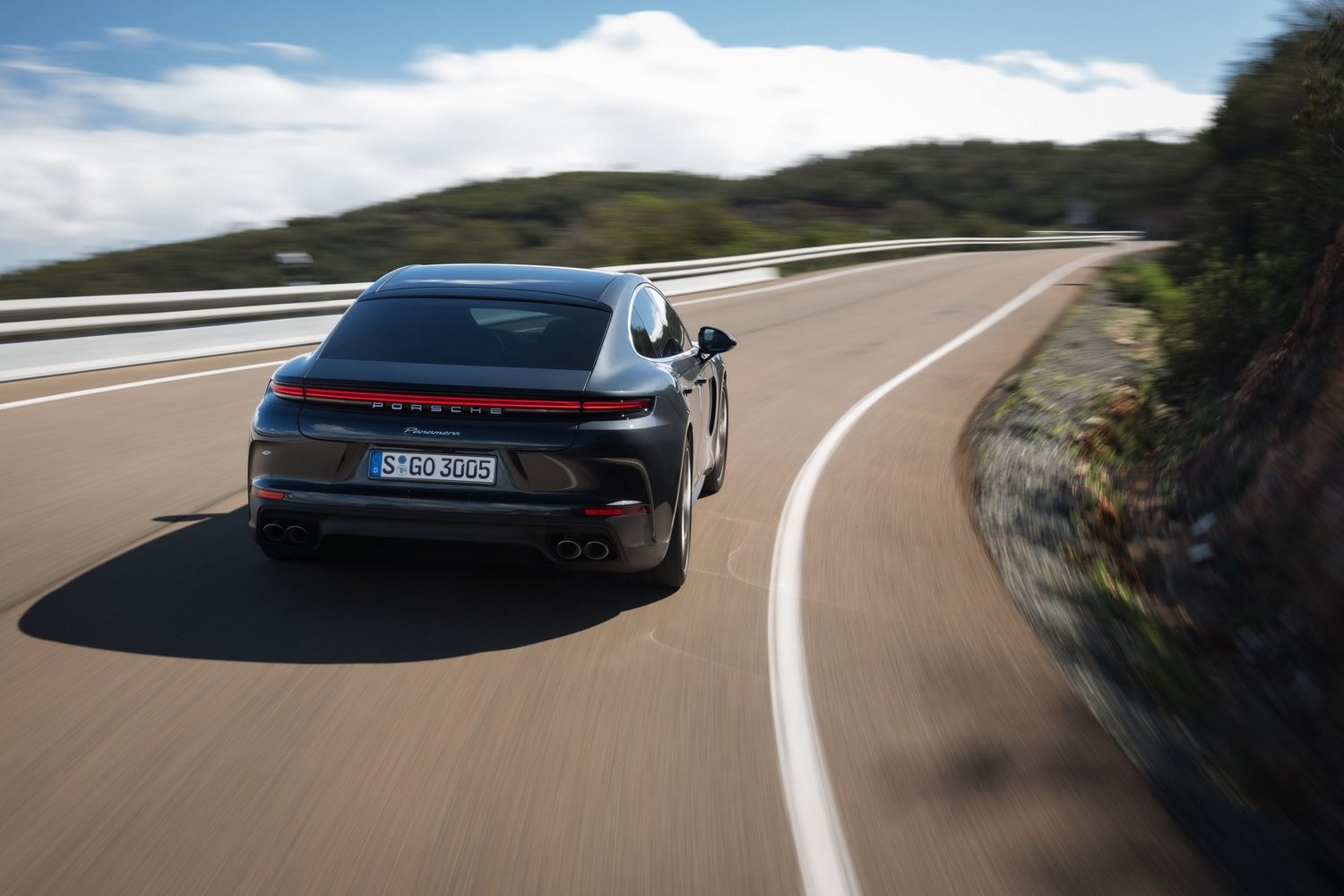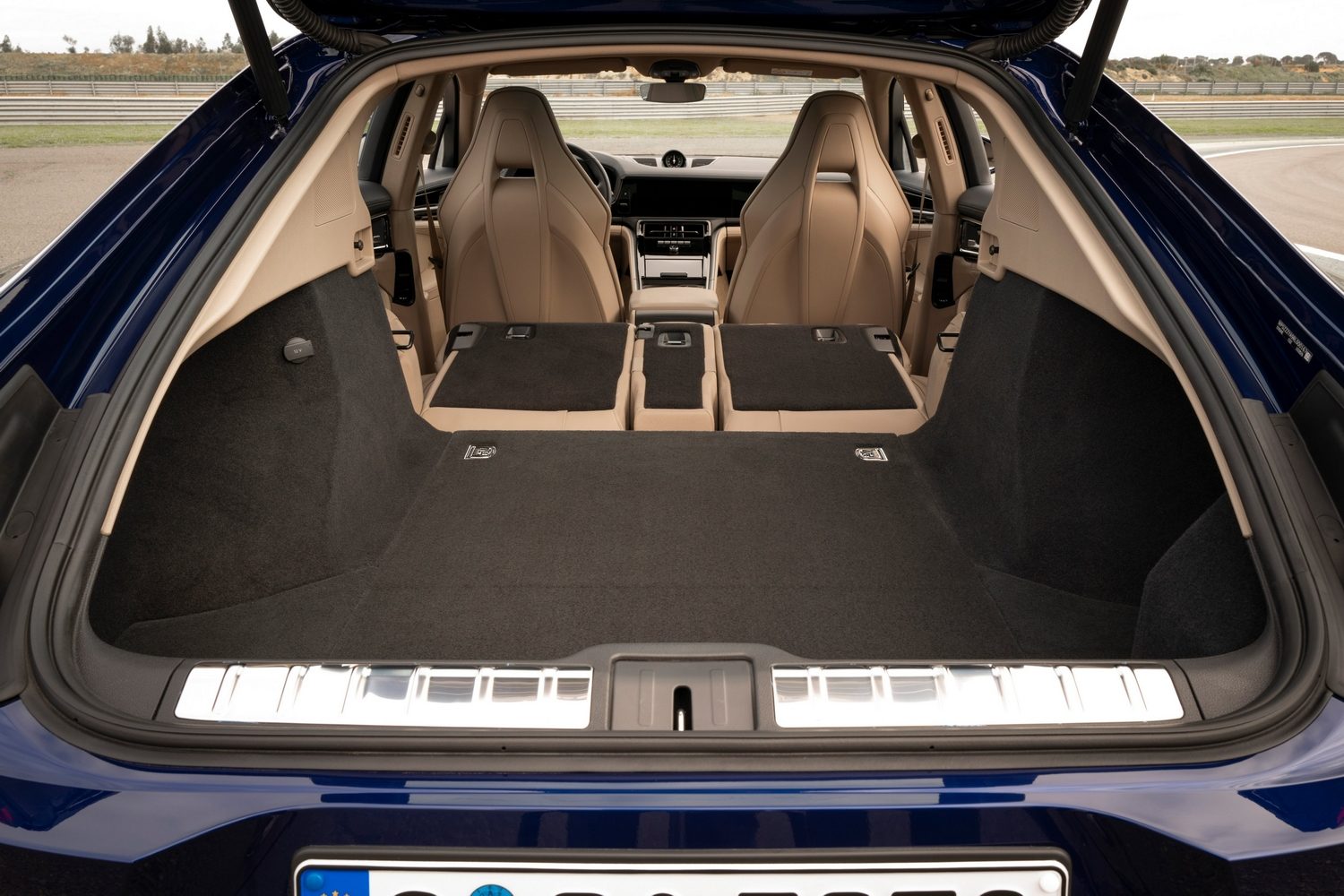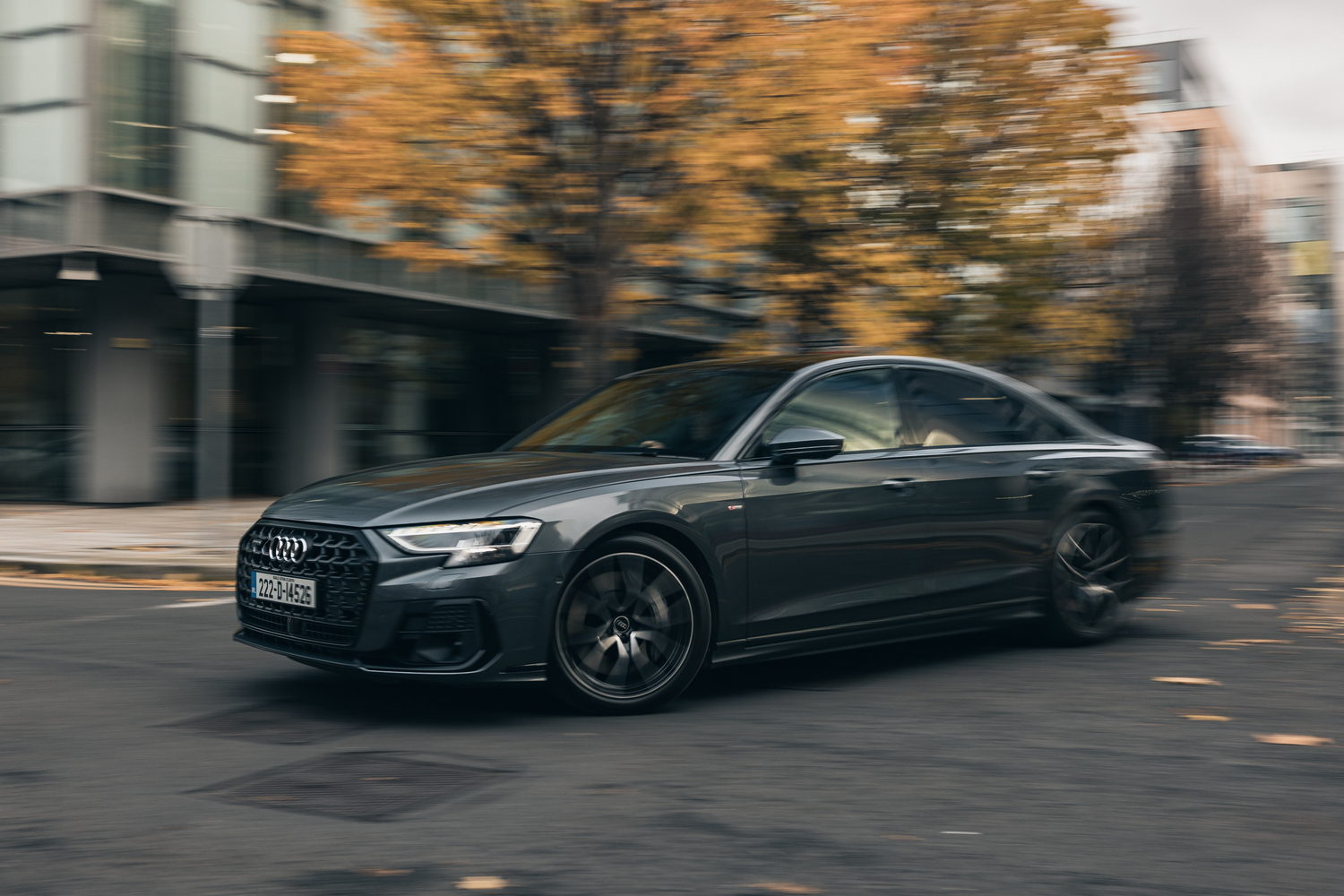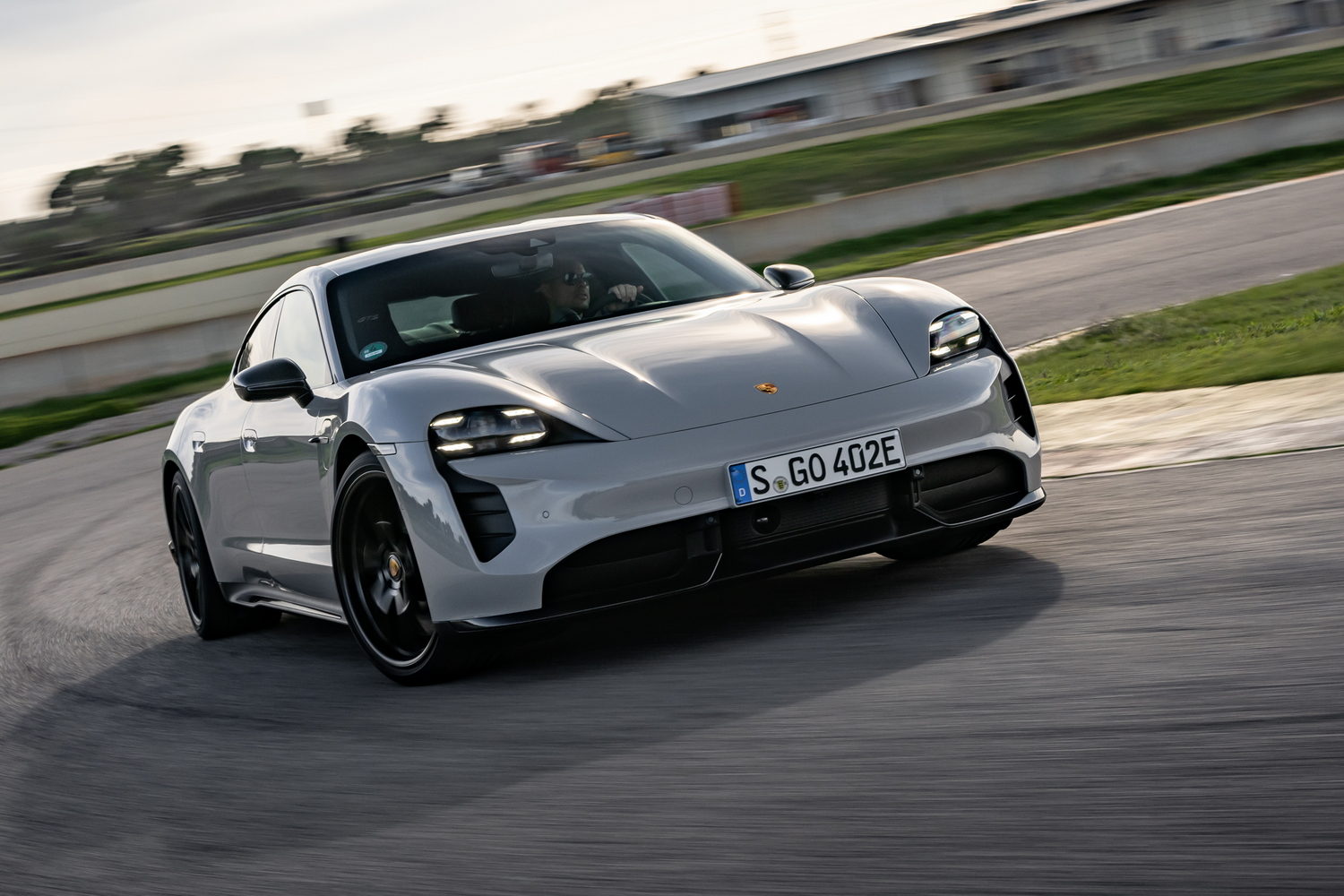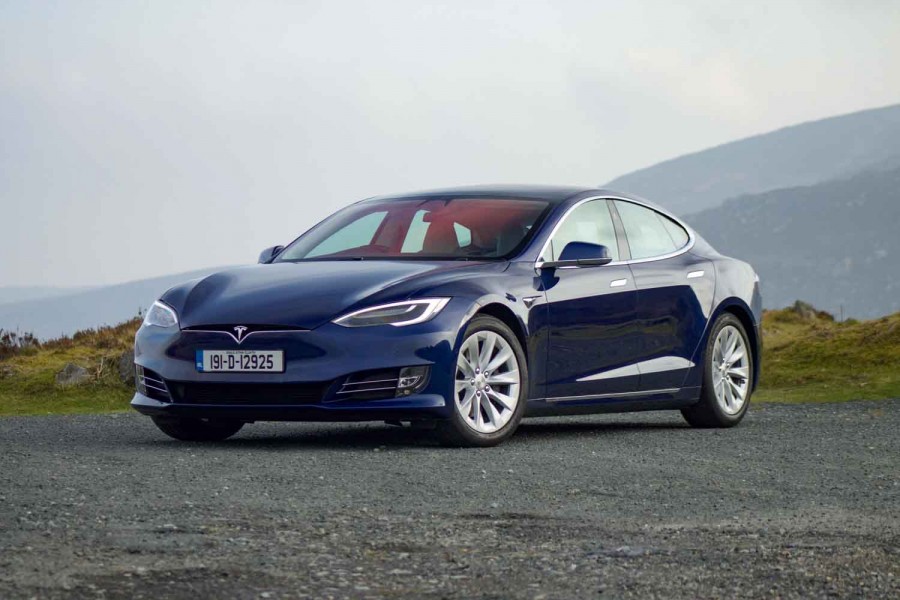Most versions of the new Porsche Panamera range come with four-wheel drive as standard, but there's a sole rear-driven example which forms the entry-level point to ownership of this sports saloon (or fastback as it is really). We've driven the 'plain' Panamera to see what it's like.
In the metal
You won't easily spot the basic Panamera on the road, as it looks just as good and upmarket as its relations. The key signifiers of its two-wheel-drive status are a simple boot badge that reads 'Panamera' (with no qualifier after it) and a lack of 'E-Hybrid' logos on the front wings, as this is one of two pure petrol models along with the Panamera 4. It also runs on demure 19-inch alloys as standard, although most Porsche owners will upgrade those so that's not always a given.
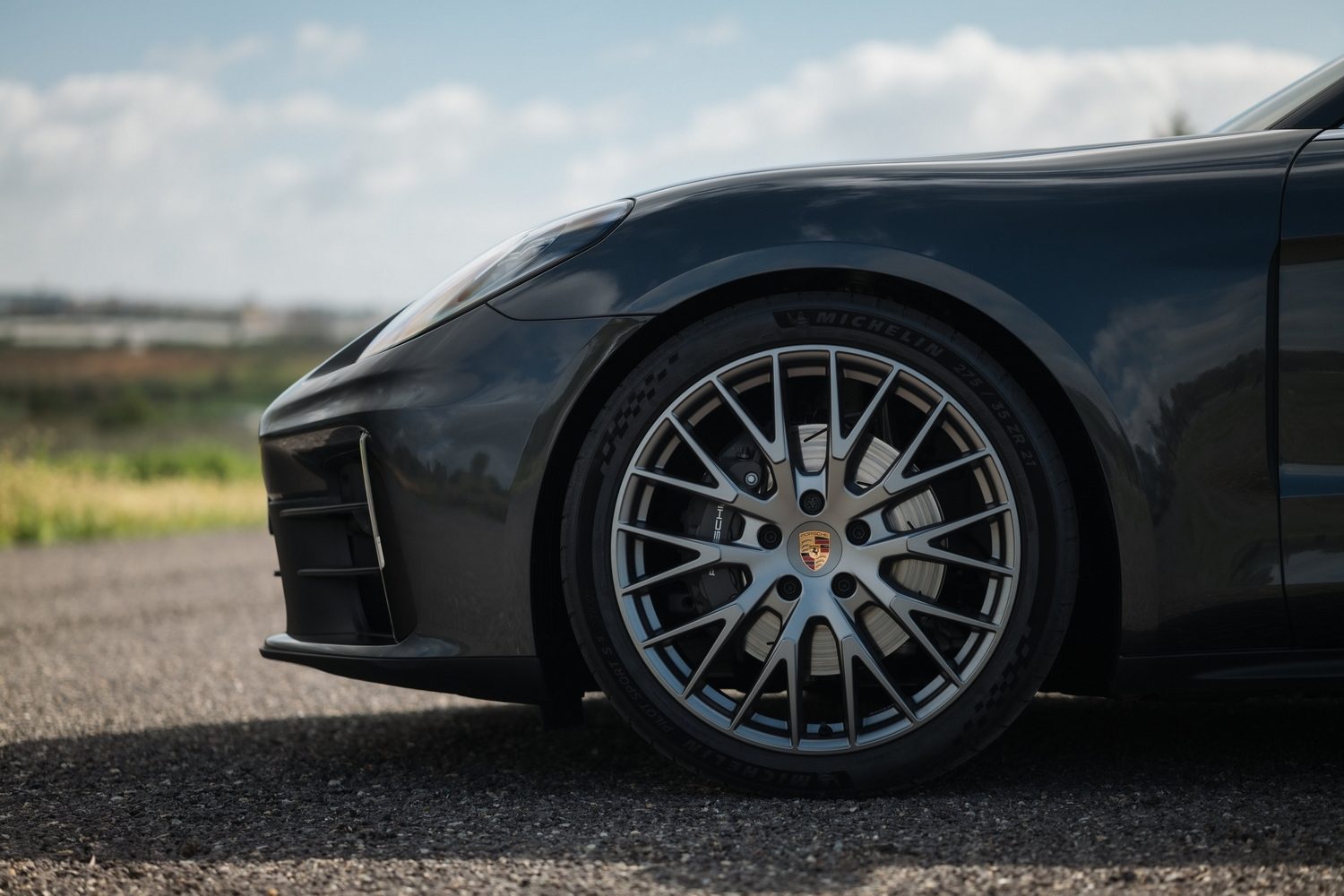
Otherwise, it's the same as the other third-gen Panameras. There are now more pronounced front wings, a design cue it takes from the Porsche 911 sports car, and a square front air intake accompanied by a distinctive slot vent in the front bumper. At the rear is a full-width light strip which gives the car definition and a broad stance from a visual perspective, but overall, the shape is clean, it's unfussy, it's familiar - it looks a lot like the Panamera it has just replaced in the line-up - and, crucially, it's attractive.
The interior is dominated by screens but, sensibly, Porsche hasn't gone all-in with controls in the central 10.9-inch Porsche Communication Management (PCM) infotainment display. There's still a panel for the climate functions, for instance, while various driver-centric controls are clustered on or around the steering wheel - including the gear selector, which is now a little stubby electric-razor-type thing up on the fascia, instead of a lever mounted in the central tunnel.

Material quality is excellent throughout the cabin and the Panamera affords good visibility out, even through its rear screen with the rake of the glass, while space in the back is more than adequate for adults thanks to the car's long 2,950mm wheelbase (the distance between the axles). At the very rear of the body is a boot accommodating 494 litres seats up and 1,328 litres with the 40:20:40-split second row folded away, figures which are better than those for the E-Hybrid models due to the placement of the latter cars' battery packs under the boot floor. This large load space, underneath a big tailgate, is one reason (along with slow sales) that we won't see a Sport Turismo estate version of the Panamera in this generation of the car. Which we're not happy with.
Driving it
Using a 2.9-litre V6 biturbo petrol engine and eight-speed PDK transmission, the Porsche Panamera rear-wheel drive develops the same 353hp and 500Nm as the Panamera 4, but it obviously only sends its outputs to the rear wheels rather than all four corners. This makes it the least accelerative Panamera of them all, recording a 5.3-second 0-100km/h time without Sport Chrono and trimming that to five seconds exactly with the launch control-equipped kit (€2,431) fitted.
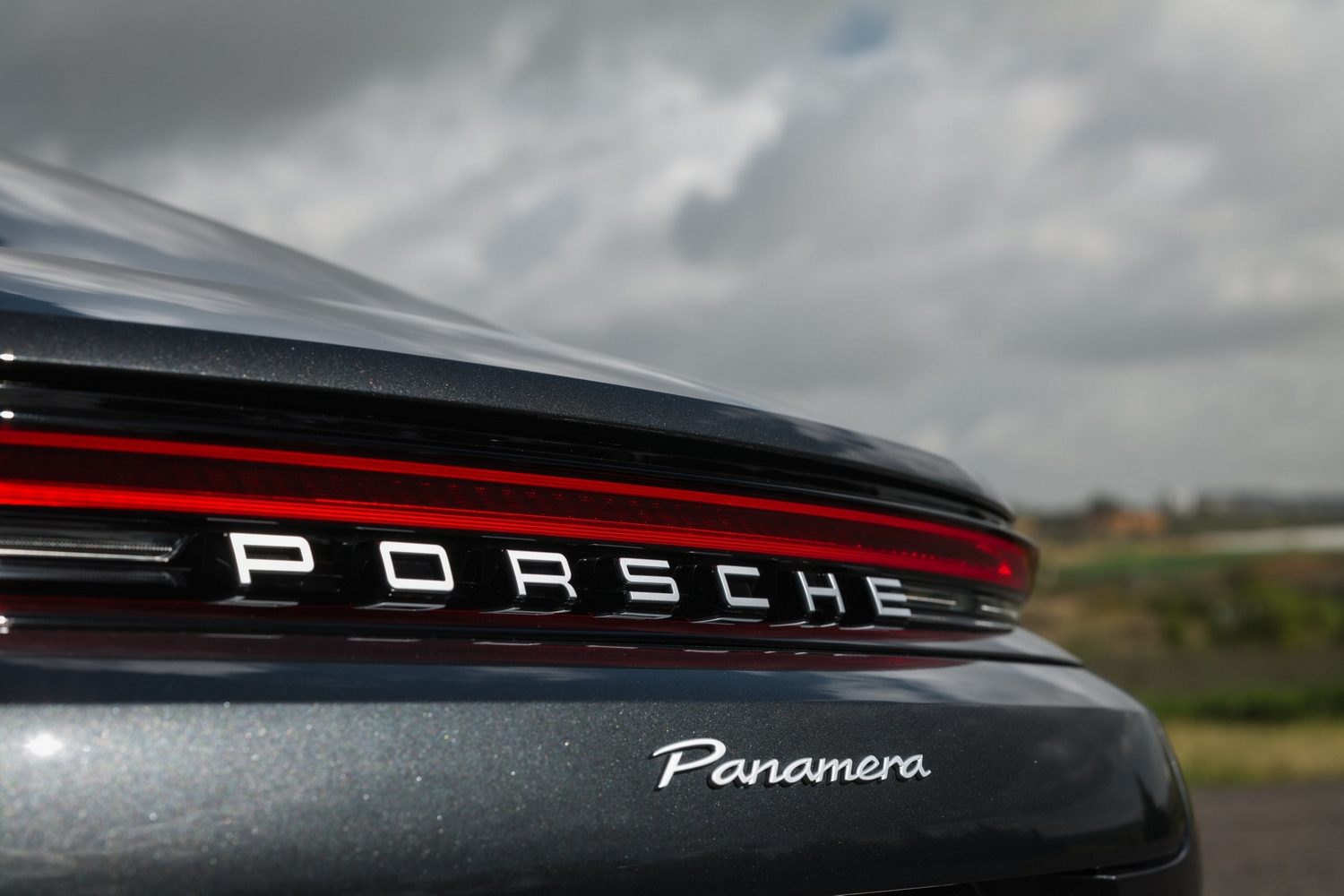
However, it is also the lightest Panamera model with a kerb weight of 1,960kg and - as we keep saying - it's also the only car in the line-up with just two driven wheels. This makes it highly entertaining for its driver. There's more of a sense of playfulness from the rear axle in the base Panamera, whereas the Panamera 4 by comparison just fires out of corners with its enhanced traction... which might, ultimately, mean it is more capable and quicker along a twisting road, but it's also less fun. The rear-wheel-drive model could do with the Porsche Torque Vectoring Plus (PTV+) differential, though; it tends to scruffily spin up a -rear wheel if you're too injudicious with the throttle at times.
Like any new Panamera, the standard suspension is two-chamber adaptive air springs with Porsche Active Suspension Management (PASM) two-valve dampers. This blesses the two-wheel-drive model with brilliant handling characteristics, marked out by an impressive level of body control even under duress, as well as the ability to soak up most of the worst road surfaces out there. As something which has to be comfortable first and sporty second, despite the Porsche badges it wears normally dictating that things be the other way around, the German firm seems to have got the blend of cornering acuity to rolling refinement about spot on.

But not perfect. There's always a firm-edged gait to the way the Panamera rides, reminding you at all times that it's a sports saloon in ethos, rather than a 'wafter', and if you dial it up into Sport Plus then the damping takes too firm a grip on the body and starts giving the car's shell abrupt vertical movements over even the most modest of bumps. There's also a significant degree of road roar echoing around in the back of the passenger compartment on the poorest of surfaces, an odd lapse in mechanical noise isolation from this most fastidious of companies. Countering that, at least you don't hear any notable wind buffeting about the passenger compartment, thanks to the Panamera's aerodynamically efficient body.
However, these minor trade-offs in outright refinement are worth it for the heavenly steering on the Panamera, which makes driving it a total delight. Through all three modes, the set-up is faithful, informative and downright enjoyable to use, helped no end by the fact that Porsche always fits its cars with what should be the industry-standard steering wheel and the Panamera is no exception to this most welcome rule. The steering interface alone is the one thing that constantly reminds you that the Porsche is something special, something a cut above many of its rivals dynamically. It's what turns a very good sports saloon into a genuinely great one.

And as for performance, this Panamera rear-wheel drive doesn't feel like the weak link in the chain. On the road, the theoretical acceleration deficit to the Panamera 4 only really makes itself evident during off-the-mark getaways, as once you're rolling the two-wheel-drive V6 rightfully gives the impression that it's every bit as potent and muscular as its four-wheel-drive relation. Switch into either Sport or Sport Plus mode and if the sports exhaust (€4,716) has been optioned up, the soundtrack takes on a mean, hard-edged timbre that's most agreeable. In short, you really don't need the Panamera 4 - not unless you often tow (yet both cars are officially rated to pull the same 2,200kg of braked trailer) or you live in places which get a regular blanketing of snow.
What you get for your money
The rear-wheel-drive Panamera is around €6,000 less than the Panamera 4, but it's still far pricier than the 4 E-Hybrid and 4S E-Hybrid plug-in variants, both of which have a lot more power and standard equipment for their outlay. The reason for the latter situation is that in Porsche's eyes, the E-Hybrids are higher 'trim' levels for the Panamera - they're only cheaper here thanks to our CO2 taxation reducing the VRT on the plug-in hybrids, which have super-low tailpipe emissions in comparison to this car.
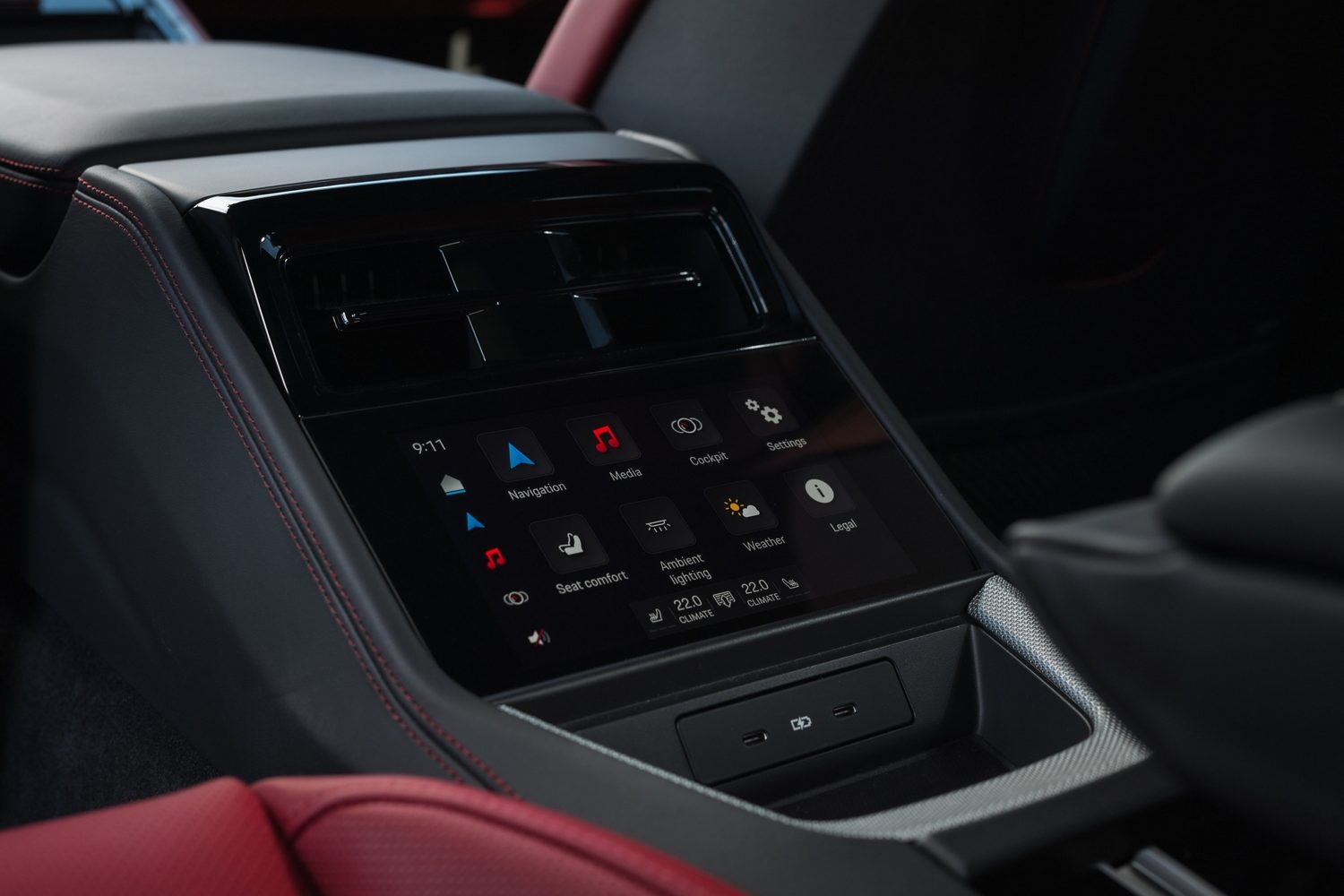
Speaking of which, stick with the standard 19-inch alloys and you can sneak the rear-wheel-drive Panamera beneath the 225g/km CO2 threshold that almost doubles the annual road tax rate from €1,250 to €2,400 - no model of the Panamera 4 can match that, however, with a minimum 230g/km meaning they will definitely incur the highest road tax rate going. It's another reason to stick with the two-wheel-drive Panamera if you're absolutely dead-set on a pure-petrol model.
Summary

We're convinced by the idea that the Porsche Panamera is the best top-end sports saloon of them all. It's obviously not cheap to buy, as befits a Porsche, but the position of the two V6-only base models is further complicated by our taxation laws - they don't seem to make an awful lot of sense in the face of more powerful hybrids that are 25 to 40 grand cheaper to buy in the first place, and which will land owners with far lower annual motor tax bills. That said, aside from occasionally overly loud cabin noise and dampers that are too intransigent for regular road use, in practice the rear-wheel-drive Panamera V6 does many, many things so very right indeed. It's a truly exceptional piece of kit.

